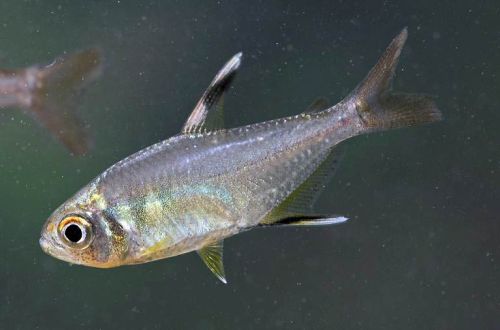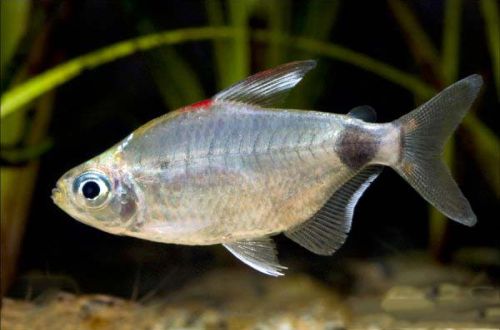
Callista
Callista or Tetra Minor, scientific name Hyphessobrycon eques, belongs to the Characidae family (Characinidae). A beautiful decorative fish with a bright, eye-catching color, even a small flock can decorate any aquarium. In addition to its appearance, Callista has good endurance, making it an excellent choice for beginner aquarists.
Contents
Habitat
This species is distributed in South America mainly in the river systems of Madeira and Guapore (Brazil). They live in stagnant or slightly flowing bodies of water with dense vegetation, such as tributaries of rivers, streams, ponds and small lakes. They prefer to stay in the upper layers of the water, feed on worms, crustaceans, insects and plant debris.
Description
The fish has a typical Tetra body shape – somewhat elongated and laterally compressed. The color varies from orange to deep red, even crimson. Behind the gill cover, a black marking/spot is noticeable. The fins also have dark pigmentation, but their edges are white. There are several artificially bred breeding forms that differ in color or long fins.
Food
They use all types of dry industrial feeds such as flakes, granules, etc., you can diversify food by periodically including bloodworms or daphnia in the diet. Since the fish are small in size, the food particles must be small in order for them to be swallowed.
Maintenance and care
The modest size of the fish allows you to get by with a small aquarium up to 100 liters. An important condition for successful maintenance is the provision of the necessary water quality. It should be acidic or slightly acidic, this can be helped by a filter with peat-based filter material, which has the ability to acidify water. The addition of dry leaves also contributes to this process, in addition, the water acquires a light brown color, characteristic of the natural habitat. Fish do not like currents, any significant movement of water, so point the filter outlet manifolds at the glass, this will weaken the water jet. The lighting system is set to low power, creating a subdued light. Other important equipment: heater and aerator.
In the design, the presence of dense thickets of plants along the side and back walls of the aquarium is mandatory, floating plants are welcome. Sandy soil with shelters in the form of snags, pieces of wood, roots, etc.
Social behavior
Relatively peaceful fish, getting along well only with species of similar size, all who are smaller will be subjected to persecution and aggression. Keeping at least 5-6 individuals in a flock, if there are several males, they will arrange skirmishes among themselves, which, however, do not lead to injuries.
Sexual differences
Males have a brighter and more saturated color, females look pale against their background, in addition, they are larger than males, less elegant.
Breeding / breeding
Breeding is quite simple, it requires a separate tank with a volume of 3-5 liters, except for a heater from the equipment. In the design of sandy soil and dense thickets of plants with thin leaves.
The stimulus for spawning is enhanced nutrition with meat products – the addition of bloodworms or daphnia to the daily diet, as well as a decrease in the acidity level of water to 6.8 pH and the establishment of hardness at values close to 10 dH. Similar in composition, the water should be in the spawning aquarium.
About a week after changes in diet and water composition, the couple is placed in a separate tank, where spawning takes place. The female attaches the eggs in bunches to the leaves of plants, and the male fertilizes them. Parents return to the common aquarium, the fry appear in a day, feed them with microfood, brine shrimp.
Diseases
In an aquarium with a well-established biological system and the proper hydrochemical composition of the water, there are usually no health problems. Read more about symptoms and treatments in the Aquarium Fish Diseases section.





